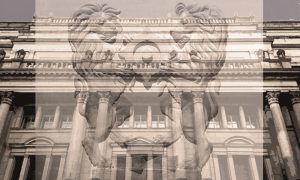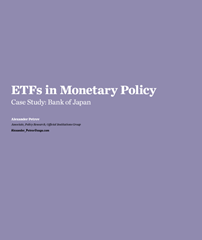
ETFs in Monetary Policy Case Study: Bank of Japan
Posted on 02/28/2018
This article is sponsored by State Street.
By: Alexander Petrov, Associate, Policy Research, Official Institutions Group at State Street Global Advisors
KEY POINTS
– Bank of Japan (BoJ) has diversified assets in its purchase program through the use of ETFs*
– ETF purchases perform a supplementary role in monetary policy, but have significant implications for equity and ETF markets
– Divestment of the ETFs and other shares will need careful management
 Using Exchange-Traded Funds (ETFs) for monetary policy purposes remains rare and controversial, despite many central banks adopting unconventional measures following the financial crisis. Some central banks buy equities for their foreign exchange reserves,** but they are usually considered too risky for use in domestic monetary policy. However, one major central bank — the Bank of Japan (BoJ) — has been purchasing shares using ETFs since 2010, as part of its broader asset-buying program to ease monetary conditions. In this paper, we examine why BoJ chose this mechanism and the footprint it has left on the structure of the Japanese equity market. We consider the future policy implications and next steps BoJ might take.
Using Exchange-Traded Funds (ETFs) for monetary policy purposes remains rare and controversial, despite many central banks adopting unconventional measures following the financial crisis. Some central banks buy equities for their foreign exchange reserves,** but they are usually considered too risky for use in domestic monetary policy. However, one major central bank — the Bank of Japan (BoJ) — has been purchasing shares using ETFs since 2010, as part of its broader asset-buying program to ease monetary conditions. In this paper, we examine why BoJ chose this mechanism and the footprint it has left on the structure of the Japanese equity market. We consider the future policy implications and next steps BoJ might take.
VIEW REPORT
Disclaimer
By clicking on the link to view the report, you acknowledge you are an institutional investor or other accredited investor.
* Exchange-traded funds (ETFs) are funds that trade on an exchange and typically offer exposure to an index of underlying securities.
** Foreign exchange reserves are assets held by central banks in foreign currencies, used to back their liabilities, conduct monetary policy and intervene in currency markets.
